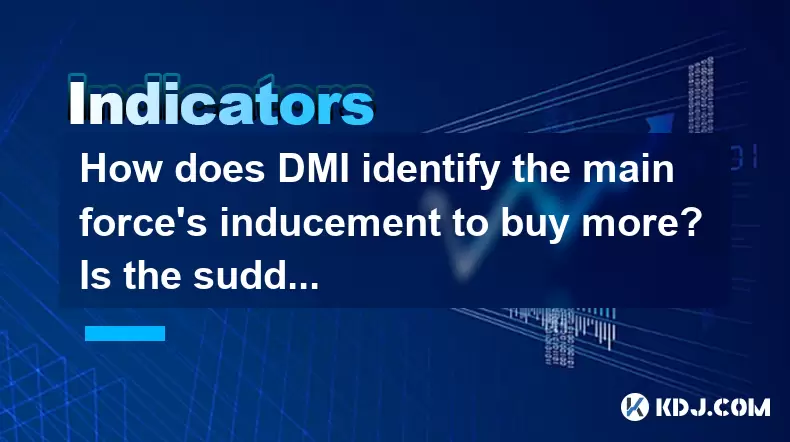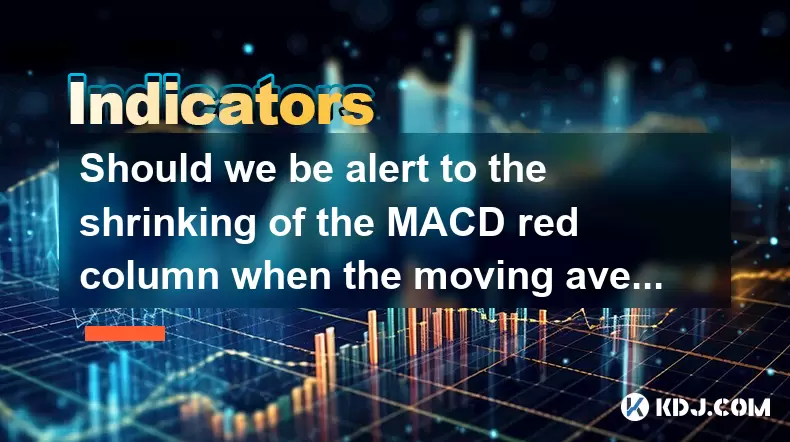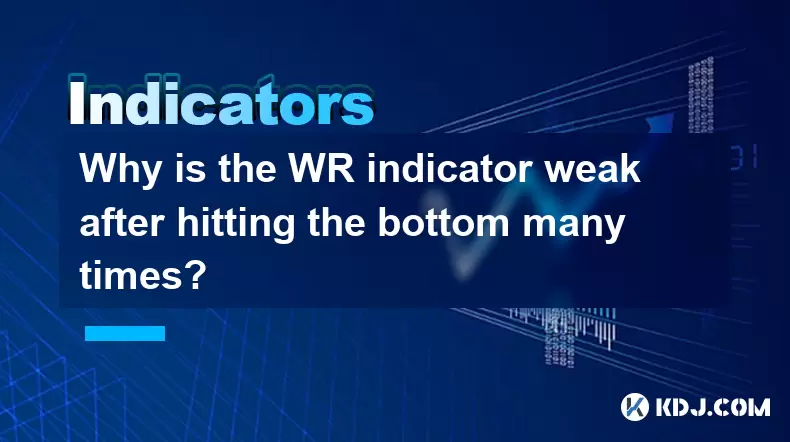-
 Bitcoin
Bitcoin $101,898.5005
-0.75% -
 Ethereum
Ethereum $2,258.1125
-1.07% -
 Tether USDt
Tether USDt $1.0004
0.01% -
 XRP
XRP $2.0178
-2.93% -
 BNB
BNB $624.0243
-1.53% -
 Solana
Solana $134.3298
-0.90% -
 USDC
USDC $0.9999
0.01% -
 TRON
TRON $0.2675
-2.05% -
 Dogecoin
Dogecoin $0.1538
-1.96% -
 Cardano
Cardano $0.5482
-1.11% -
 Hyperliquid
Hyperliquid $35.5636
5.45% -
 Bitcoin Cash
Bitcoin Cash $453.4902
-1.66% -
 Sui
Sui $2.5134
-2.97% -
 UNUS SED LEO
UNUS SED LEO $9.1292
1.77% -
 Chainlink
Chainlink $11.8457
-1.60% -
 Stellar
Stellar $0.2312
-2.73% -
 Avalanche
Avalanche $16.9721
0.29% -
 Toncoin
Toncoin $2.7549
-3.82% -
 Shiba Inu
Shiba Inu $0.0...01081
-1.10% -
 Litecoin
Litecoin $80.8250
-0.71% -
 Hedera
Hedera $0.1374
0.21% -
 Monero
Monero $305.4827
-2.36% -
 Ethena USDe
Ethena USDe $1.0006
0.00% -
 Dai
Dai $1.0000
-0.01% -
 Polkadot
Polkadot $3.2085
-3.12% -
 Bitget Token
Bitget Token $4.0845
-3.13% -
 Uniswap
Uniswap $6.3353
-1.63% -
 Pi
Pi $0.5085
-0.70% -
 Pepe
Pepe $0.0...08913
-3.82% -
 Aave
Aave $232.7090
-0.58%
How does DMI identify the main force's inducement to buy more? Is the sudden rise of +DI a trap?
The DMI helps traders assess trend strength in crypto markets, identifying buying or selling opportunities by analyzing +DI, -DI, and ADX components.
May 23, 2025 at 08:42 am

The Directional Movement Index (DMI) is a technical analysis tool used in the cryptocurrency market to assess the strength of a trend and identify potential buying or selling opportunities. One of the key aspects traders look at is how the DMI can help identify the main force's inducement to buy more, and whether a sudden rise in the Positive Directional Indicator (+DI) could be a trap. Let's delve into these topics in detail.
Understanding the DMI and its Components
The DMI consists of three main components: the Positive Directional Indicator (+DI), the Negative Directional Indicator (-DI), and the Average Directional Index (ADX). These indicators work together to provide a comprehensive view of market trends.
- +DI measures the upward price movement over a given period, indicating the strength of the bullish trend.
- -DI measures the downward price movement over the same period, indicating the strength of the bearish trend.
- ADX measures the strength of the trend, regardless of its direction. A higher ADX value suggests a stronger trend.
Identifying the Main Force's Inducement to Buy More
The main force's inducement to buy more can be identified through specific patterns and signals within the DMI. Traders look for situations where the +DI is consistently higher than the -DI, indicating a strong bullish trend. Additionally, a rising ADX value alongside a dominant +DI can signal that the bullish trend is gaining strength, which might be due to the main force's efforts to encourage more buying.
To identify these patterns, traders should:
- Monitor the +DI and -DI lines closely. When the +DI consistently remains above the -DI, it suggests a strong bullish trend.
- Observe the ADX line. A rising ADX above 25 indicates a strong trend, and if this coincides with a dominant +DI, it could be a sign of the main force's inducement to buy more.
Analyzing the Sudden Rise of +DI
A sudden rise in the +DI can be a significant event for traders, but it's crucial to determine whether this is a genuine bullish signal or a trap. A trap occurs when the market appears to be moving in one direction but quickly reverses, catching traders off guard.
To analyze whether a sudden rise in +DI is a trap, consider the following factors:
- Volume: A sudden rise in +DI accompanied by low trading volume might indicate a lack of genuine interest and could be a trap. Conversely, high trading volume suggests strong market participation and a more reliable signal.
- ADX: If the ADX does not confirm the rise in +DI by also increasing, it might suggest that the sudden rise is not supported by a strong trend and could be a trap.
- Other Technical Indicators: Cross-referencing with other indicators like the Relative Strength Index (RSI) or Moving Averages can provide additional context. If these indicators do not confirm the bullish signal from the +DI, it might be a trap.
Using DMI in Conjunction with Other Indicators
While the DMI is a powerful tool, it is most effective when used in conjunction with other technical indicators. This multi-indicator approach helps traders gain a more comprehensive understanding of market conditions and reduces the risk of falling into traps.
For instance, combining the DMI with the RSI can provide insights into overbought or oversold conditions. If the +DI rises suddenly but the RSI indicates an overbought market, it might be a trap. Similarly, using Moving Averages can help confirm trends identified by the DMI.
To effectively use DMI with other indicators, traders should:
- Plot the DMI alongside the RSI on the same chart. Look for divergences between the two indicators to identify potential traps.
- Use Moving Averages to confirm the trends suggested by the +DI and -DI. If the +DI rises but the price is below a key moving average, it might be a trap.
Practical Example of DMI Analysis
Let's walk through a practical example to illustrate how traders might use the DMI to identify the main force's inducement to buy more and determine if a sudden rise in +DI is a trap.
Assume a cryptocurrency is trading at $100, and the +DI suddenly spikes from 20 to 40, while the -DI remains at 15. The ADX is at 20 and starts to rise to 25.
- Step 1: Check the trading volume. If the volume is high, it suggests strong market participation and the +DI rise is more likely to be genuine.
- Step 2: Monitor the ADX. The rise from 20 to 25 confirms a strengthening trend, supporting the bullish signal from the +DI.
- Step 3: Cross-reference with other indicators. If the RSI is not in overbought territory and the price is above key moving averages, it further supports the bullish signal.
In this scenario, the sudden rise in +DI is likely not a trap but a genuine signal of the main force's inducement to buy more, given the supporting evidence from volume, ADX, and other technical indicators.
Common Pitfalls and How to Avoid Them
While the DMI is a valuable tool, traders must be aware of common pitfalls and how to avoid them to make the most of their analysis.
- Over-reliance on a Single Indicator: Relying solely on the DMI without considering other indicators can lead to false signals. Always use the DMI in conjunction with other tools.
- Ignoring Market Context: The broader market context, including news and events, can significantly impact the effectiveness of the DMI. Always consider the bigger picture when interpreting DMI signals.
- Misinterpreting Signals: A sudden rise in +DI can be misleading if not analyzed in the context of volume, ADX, and other indicators. Always cross-reference signals to avoid misinterpretation.
To avoid these pitfalls, traders should:
- Use the DMI as part of a broader technical analysis strategy, incorporating multiple indicators.
- Stay informed about market news and events that could influence cryptocurrency prices.
- Always consider volume and other confirming indicators when interpreting DMI signals.
Frequently Asked Questions
Q1: Can the DMI be used for all cryptocurrencies, or is it more effective for certain types?
The DMI can be used for all cryptocurrencies, but its effectiveness can vary depending on the liquidity and volatility of the asset. For highly liquid and widely traded cryptocurrencies like Bitcoin and Ethereum, the DMI tends to provide more reliable signals due to the higher volume and clearer trends. For less liquid cryptocurrencies, the signals might be less reliable due to more erratic price movements.
Q2: How often should I check the DMI to stay on top of market trends?
The frequency of checking the DMI depends on your trading strategy and time horizon. For short-term traders, checking the DMI on an hourly or daily basis can help capture quick market movements. For long-term investors, a weekly or monthly check might be sufficient to monitor broader trends.
Q3: Are there any specific settings or parameters I should use for the DMI when analyzing cryptocurrencies?
The standard settings for the DMI are a 14-period calculation for the +DI, -DI, and ADX. These settings are generally effective for most cryptocurrencies. However, some traders might adjust the period to suit their trading style. For example, using a shorter period like 7 can make the DMI more sensitive to recent price movements, while a longer period like 21 can provide a smoother trend analysis.
Q4: Can the DMI be used effectively in a highly volatile market, or is it better suited for stable conditions?
The DMI can be used in both volatile and stable markets, but its effectiveness might vary. In highly volatile markets, the DMI can help identify strong trends amidst the noise, but traders should be cautious of false signals due to rapid price swings. In stable markets, the DMI can provide clearer and more reliable trend signals. Always consider the market's volatility when interpreting DMI signals and adjust your strategy accordingly.
Disclaimer:info@kdj.com
The information provided is not trading advice. kdj.com does not assume any responsibility for any investments made based on the information provided in this article. Cryptocurrencies are highly volatile and it is highly recommended that you invest with caution after thorough research!
If you believe that the content used on this website infringes your copyright, please contact us immediately (info@kdj.com) and we will delete it promptly.
- DOGE Recovery Amid US-Iran Tensions: A Market Rollercoaster
- 2025-06-23 20:45:13
- Fiserv, PayPal, and Stablecoins: A New Era of Interoperability?
- 2025-06-23 20:45:13
- Hacken Token's Wild Ride: Minting Exploit and the Cryptocurrency Crash
- 2025-06-23 21:05:12
- Dogecoin, Cloud Mining, and Blockchain: A Meme's Evolution
- 2025-06-23 21:25:12
- Layer 1 Turmoil: CEO Ousted Amidst Scam Allegations
- 2025-06-23 21:05:12
- Solana's Stumble: Price Crash and Network Exodus?
- 2025-06-23 21:25:12
Related knowledge

What is the significance of the gap formed by the gap opening not being filled within five days?
Jun 23,2025 at 09:42pm
Understanding Gaps in Cryptocurrency TradingIn the world of cryptocurrency trading, a gap refers to a situation where the price of an asset jumps from one level to another without any trading activity occurring between those two levels. This often happens over weekends or holidays when the market is closed, and significant news or events occur that impa...

Does the second golden cross of MACD above the zero axis represent the continuation of strength?
Jun 23,2025 at 08:21pm
Understanding the MACD IndicatorThe Moving Average Convergence Divergence (MACD) is a widely used technical analysis tool in cryptocurrency trading. It consists of three main components: the MACD line, the signal line, and the histogram. The MACD line is calculated by subtracting the 26-period Exponential Moving Average (EMA) from the 12-period EMA. The...

Is it effective when the DIF line suddenly crosses the zero axis when the volume is shrinking and the market is trading sideways?
Jun 23,2025 at 07:29pm
Understanding the DIF Line in Technical AnalysisThe DIF line, or the Difference Line, is a critical component of the MACD (Moving Average Convergence Divergence) indicator, widely used in technical analysis across cryptocurrency and traditional financial markets. It represents the difference between the 12-period EMA (Exponential Moving Average) and the...

Should we be alert to the shrinking of the MACD red column when the moving average is arranged in a bullish pattern?
Jun 23,2025 at 08:14pm
Understanding the MACD Red Column and Its SignificanceThe Moving Average Convergence Divergence (MACD) is a widely used technical indicator in cryptocurrency trading. It consists of three main components: the MACD line, the signal line, and the MACD histogram (the red column). The red column represents the difference between the MACD line and the signal...

Why is the WR indicator weak after hitting the bottom many times?
Jun 23,2025 at 07:56pm
Understanding the WR Indicator in Cryptocurrency TradingThe Williams %R (WR) indicator is a momentum oscillator used by traders to identify overbought and oversold levels in the market. It ranges from 0 to -100, with readings above -20 considered overbought and below -80 considered oversold. In the context of cryptocurrency trading, where volatility is ...

Is the shrinking cross star after the historical high a signal of topping?
Jun 23,2025 at 05:56pm
Understanding the Shrinking Cross Star PatternIn technical analysis, candlestick patterns are essential tools for traders to predict potential price movements. One such pattern is the shrinking cross star, which appears as a small-bodied candle with long upper and lower shadows, indicating indecision in the market. When this pattern forms after an asset...

What is the significance of the gap formed by the gap opening not being filled within five days?
Jun 23,2025 at 09:42pm
Understanding Gaps in Cryptocurrency TradingIn the world of cryptocurrency trading, a gap refers to a situation where the price of an asset jumps from one level to another without any trading activity occurring between those two levels. This often happens over weekends or holidays when the market is closed, and significant news or events occur that impa...

Does the second golden cross of MACD above the zero axis represent the continuation of strength?
Jun 23,2025 at 08:21pm
Understanding the MACD IndicatorThe Moving Average Convergence Divergence (MACD) is a widely used technical analysis tool in cryptocurrency trading. It consists of three main components: the MACD line, the signal line, and the histogram. The MACD line is calculated by subtracting the 26-period Exponential Moving Average (EMA) from the 12-period EMA. The...

Is it effective when the DIF line suddenly crosses the zero axis when the volume is shrinking and the market is trading sideways?
Jun 23,2025 at 07:29pm
Understanding the DIF Line in Technical AnalysisThe DIF line, or the Difference Line, is a critical component of the MACD (Moving Average Convergence Divergence) indicator, widely used in technical analysis across cryptocurrency and traditional financial markets. It represents the difference between the 12-period EMA (Exponential Moving Average) and the...

Should we be alert to the shrinking of the MACD red column when the moving average is arranged in a bullish pattern?
Jun 23,2025 at 08:14pm
Understanding the MACD Red Column and Its SignificanceThe Moving Average Convergence Divergence (MACD) is a widely used technical indicator in cryptocurrency trading. It consists of three main components: the MACD line, the signal line, and the MACD histogram (the red column). The red column represents the difference between the MACD line and the signal...

Why is the WR indicator weak after hitting the bottom many times?
Jun 23,2025 at 07:56pm
Understanding the WR Indicator in Cryptocurrency TradingThe Williams %R (WR) indicator is a momentum oscillator used by traders to identify overbought and oversold levels in the market. It ranges from 0 to -100, with readings above -20 considered overbought and below -80 considered oversold. In the context of cryptocurrency trading, where volatility is ...

Is the shrinking cross star after the historical high a signal of topping?
Jun 23,2025 at 05:56pm
Understanding the Shrinking Cross Star PatternIn technical analysis, candlestick patterns are essential tools for traders to predict potential price movements. One such pattern is the shrinking cross star, which appears as a small-bodied candle with long upper and lower shadows, indicating indecision in the market. When this pattern forms after an asset...
See all articles
























































































